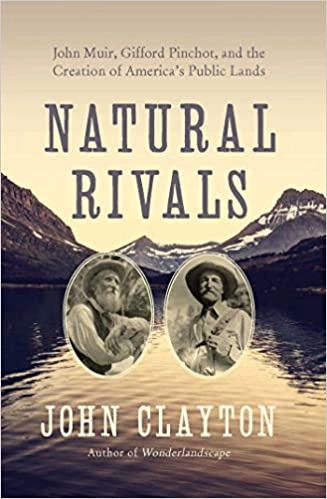Reading Level
What is the reading level of Natural Rivals: John Muir, Gifford Pinchot, and the Creation of America's Public Lands?
Analysing the books in the series, we estimate that the reading level of Natural Rivals: John Muir, Gifford Pinchot, and the Creation of America's Public Lands is 11th and 12th grade.
Expert Readability Tests for
Natural Rivals: John Muir, Gifford Pinchot, and the Creation of America's Public Lands
| Readability Test | Reading Level |
|---|---|
| Flesch Kincaid Scale | Grade 8 |
| SMOG Index | Grade 11 |
| Coleman Liau Index | Grade 11 |
| Dale Chall Readability Score | Grade 7 |
Reading Time
6 hrs 3 mins
How long to read Natural Rivals: John Muir, Gifford Pinchot, and the Creation of America's Public Lands?
The estimated word count of Natural Rivals: John Muir, Gifford Pinchot, and the Creation of America's Public Lands is 90,520 words.
A person reading at the average speed of 250 words/min, will finish the book in 6 hrs 3 mins. At a slower speed of 150 words/min, they will finish it in 10 hrs 4 mins. At a faster speed of 450 words/min, they will finish it in 3 hrs 22 mins.
| Natural Rivals: John Muir, Gifford Pinchot, and the Creation of America's Public Lands - 90,520 words | ||
|---|---|---|
| Reading Speed | Time to Read | |
| Slow | 150 words/min | 10 hrs 4 mins |
| Average | 250 words/min | 6 hrs 3 mins |
| Fast | 450 words/min | 3 hrs 22 mins |
- Authors
-
John Clayton
More about Natural Rivals: John Muir, Gifford Pinchot, and the Creation of America's Public Lands
90,520 words
Word Count
for Natural Rivals: John Muir, Gifford Pinchot, and the Creation of America's Public Lands
304 pages
Pages
9 hours and 44 minutes
Audiobook length
Description
A dynamic examination that traces the lives of two of the most influential figures—and their dueling approaches—on America's natural landscape.John Muir, the most famous naturalist in American history, protected Yosemite, co-founded the Sierra Club, and is sometimes called the Father of the National Parks. A poor immigrant, self-taught, individualistic, and skeptical of institutions, his idealistic belief in the spiritual benefits of holistic natural systems led him to a philosophy of preserving wilderness unimpaired. Gifford Pinchot founded the U.S. Forest Service and advised his friend Theodore Roosevelt on environmental policy. Raised in wealth, educated in privilege, and interested in how institutions and community can overcome failures in individual virtue, Pinchot’s pragmatic belief in professional management led him to a philosophy of sustainably conserving natural resources. When these rivaling perspectives meet, what happens? For decades, the story of their relationship has been told as a split between the conservation and preservation philosophies, sparked by a proposal to dam a remote Yosemite valley called Hetch Hetchy. But a decade before that argument, Muir and Pinchot camped together alongside Montana’s jewel-like Lake McDonald in, which was at the heart of a region not yet consecrated as Glacier National Park. At stake in 1896 was the new idea that some landscapes should be collectively, permanently owned by a democratic government. Although many people today think of public lands as an American birthright, their very existence was then in doubt, and dependent on a merger of the talents of these two men. Natural Rivals examines a time of environmental threat and political dysfunction not unlike our own, and reveals the complex dynamic that gave birth to America's rich public lands legacy.
